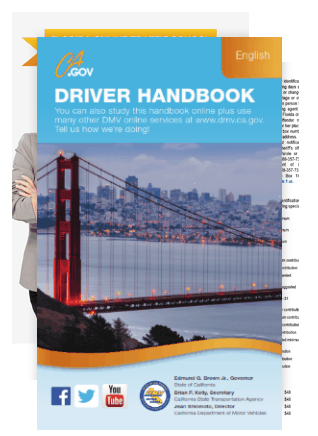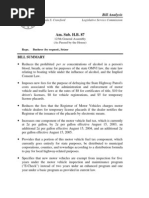California Dmv Handbook Of Registration Procedures
Sponsored.The California DMV motorcycle handbook is a supplement to the standard and focuses on the laws and knowledge required for safe motorcycle operation. The motorcycle handbook is not just for new motorcyclists—it also contains valuable information for those who have extensive motorcycle operation experience.
The motorcycle manual information is provided in cooperation with the Motorcycle Safety Foundation and is distributed through the (DMV).California’s DMV motorcycle manual information applies to the operation of all two-wheel vehicles including motor-driven cycles, mopeds, motorized bicycles and ordinary motorcycles. The guide also has a supplement devoted to the different issues that accompany operating a three-wheel motorcycle. Keep reading to learn more about the CA DMV motorcycle handbook, including where to get your own copy of this valuable resource. What topics are covered in the California DMV motorcycle handbook?The California DMV motorcycle handbook is divided into nine main sections, each covering a certain aspect of safe and knowledgeable motorcycle operation. The handbook starts with information about new motorcycle laws and general DMV information.
Manual topics include:. Two-wheel Vehicle Operation: Describes the types of motorcycles and motor-driven cycles available in California and offers tips on operating each type. Motorcycle License Requirements: Here you can find out about earning your and which type of endorsement you need. This section also includes information on motorcycle courses for new motorcyclists. Preparing to Ride: This section focuses on motorcycle helmet laws and offers other advice about safety gear. It is also the section of the guidebook that offers tips on motorcycle controls. Ride within Your Abilities: The lengthiest chapter of the handbook delves into dozens of issues regarding basic vehicle control.
The motorcycle operator manual offers advice on keeping a proper distance between vehicles, changing lanes, navigating intersections and increasing your visibility to other drivers. Included in this section are tips on mechanical failures, collision avoidance and passenger/cargo transportation. Being in Shape to Ride: This necessary chapter focuses on avoiding alcohol, drugs and other things that can impair your ability to operate your vehicle safely. Learn about DUIs and how to minimize the impact fatigue can have on your driving ability.The DMV motorcycle handbook also touches on facts, how to interact with law enforcement officers and how to lessen the impact your motorbike has on the environment. The guide includes two motorcycle knowledge test samples. Can a motorcycle handbook help applicants prepare for a California motorcycle exam?The CA DMV motorcycle handbook is often considered the most valuable tool in preparing for your motorcycle exam.
It would be difficult to fully prepare for a California motorcycle knowledge test without a booklet clearly outlining the knowledge you must have to pass. When you study your guidebook, you will learn motorcycle permit laws, how to operate your motorbike and other material that will appear on the knowledge test.The handbook also helps applicants learn the rules that will be part of the hands-on driving test. For example, the book includes diagrams showing the cone weave, obstacle swerve and other tasks that must be demonstrated during the driving exam. What other materials can help applicants prepare for a California motorcycle knowledge test or road exam?Studying your CA motorcycle operator manual is the best way to prepare for exams, but other materials can help you pass as well. In addition to reading and studying your handbook, try taking online. These serve as enhancers by familiarizing you with questions that may appear on your knowledge test.The best way to prepare for your road exam is by driving as much as possible after you have your motorcycle.
While a motorcycle license study guide includes excellent test information, a book is no substitute for what you can learn while driving a motorcycle yourself. This repeated, real-life application of motorcycle permit laws and procedures will make you a confident motorcycle driver when it is time for your road exam. Who else can benefit from a California motorcycle manual?It is easy to assume a California motorcycle operator manual is primarily designed for drivers new to motorcycle operation. However, even seasoned motorcyclists will find useful tips and tricks for motorcycle safety in the manual, including recent updates to existing state traffic laws.If you are wondering, “Do you need a driver’s license for a moped in California?” you may be hoping that you can eliminate the need to study for a knowledge exam. However, you need an M2 motorcycle license to drive a moped, motorized scooter or motorized bicycle in California.
Studying the CA DMV motorcycle handbook helps all types of motorcyclists understand the special conditions or situations that drivers of two-wheeled vehicles commonly encounter.If you are a parent or spouse of a motorcycle enthusiast, skimming through the manual can be a surprising source for gift ideas. The motorcycle manual will educate you on the types of safety equipment, clothing and shoes that best keep motorbike operators safe. These tips can help you choose a helmet or other gift that your loved one will enjoy on the road for years to come. How to Get a California DMV Motorcycle ManualIf you need a copy of the California DMV motorcycle manual, simply click to download or read a copy online. If you prefer to have a hard copy of the book, stop by your local CA DMV driver license office and one up or simply print out a copy of the online version. At many DMV locations, driving manuals are openly available on a rack in the lobby.

. Steve Gordon, DirectorParent agencyWebsiteThe California Department of Motor Vehicles ( DMV) is the that registers and and issues in the of. It regulates (through the New Motor Vehicle Board), commercial cargo carriers, private driving schools, and private traffic schools.
The DMV works with the to promptly record convictions against drivers' licenses and subsequently suspends or revokes licenses when a driver accumulates too many convictions (as measured by a point-based system). The DMV also issues to people who request one.The DMV is part of the.

It is headquartered in and operates local offices in nearly every part of the state. As of December 2017, the DMV employed over 8,900 people—35% at headquarters and 65% at 172 field offices (and various other locations). Also, as of December 2017, it maintained records for 30,112,927 persons, 33,993,857 driver's licenses and/or identification cards (there is overlap as some persons can and do hold both documents), and 35,391,347 vehicles. California has 26,957,875 licensed drivers.On July 23, 2019, Governor released a by the 'DMV Reinvention Strike Team' detailing recommendations for improving DMV transparency, worker training and performance, speed of service, and overall consumer satisfaction. As part of the release of the report, Newsom announced the appointment of Steve Gordon as the director of the California DMV. Contents.History In 1901, the authorized California cities and counties to issue licenses for operation of many types of wheeled vehicles within their boundaries, including.
From 1905 to 1913, the was authorized to implement a uniform statewide registration and licensing system for motor vehicles. In 1913, the Department of Engineering (predecessor of ) became responsible for registrations, and the became the custodian of vehicle records. Licenses for drivers of motor vehicles became mandatory in California on December 13, 1913.The first Department of Motor Vehicles was established by the Vehicle Act of 1915, but was reduced to the Division of Motor Vehicles within the Department of Finance in 1921.
Under the Vehicle Act of 1923, the Division was authorized to appoint inspectors and traffic officers to enforce the Act; these personnel were later spun off in 1947 into the Department of the. In 1929, the Division was transferred to the Department of Public Works (a descendant of the old Department of Engineering and an ancestor of Caltrans) and in 1931 DMV again became a full Department. California Department of Motor Vehicles. Retrieved May 14, 2018. ^ (PDF). Retrieved May 8, 2018.
Legislative Analyst Office. State of California. Retrieved May 8, 2018. California Governor. July 23, 2019. Retrieved July 23, 2019.
Retrieved December 31, 2017. California v. Buzard, (1966). This case analyzed the nature of the VLF at length before holding that it was preempted by the federal law then known as the Soldiers' and Sailors' Civil Relief Act of 1940 (now known as the ) with respect to nonresident members of the federal military. Laski, Beth (January 16, 1991).
The San Bernardino County Sun. San Bernardino, CA. Retrieved November 29, 2016 – via.

June 23, 2015. Morton, Victor (April 4, 2018).
Washington Times. District of Columbia. Retrieved April 5, 2018. Darrah, Nicole (April 4, 2018). New York City. Retrieved April 5, 2018.External links.
California Dealer Temporary Registration
in the.